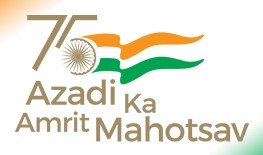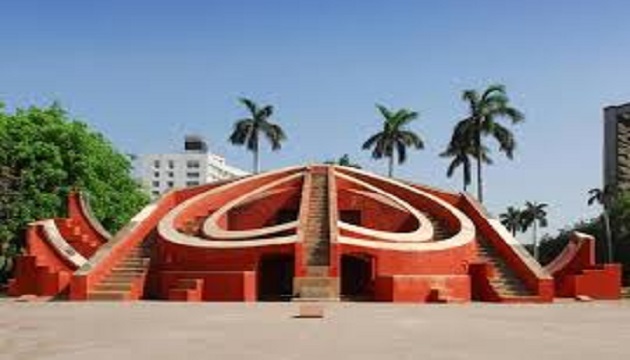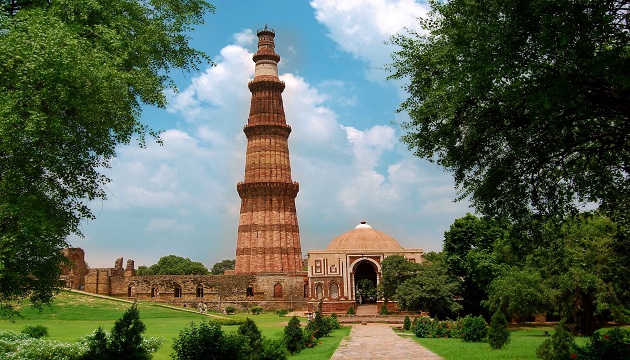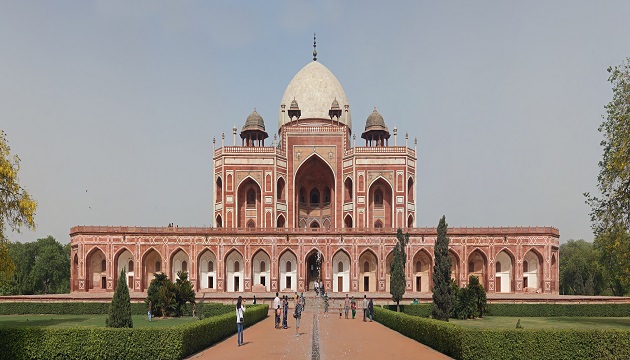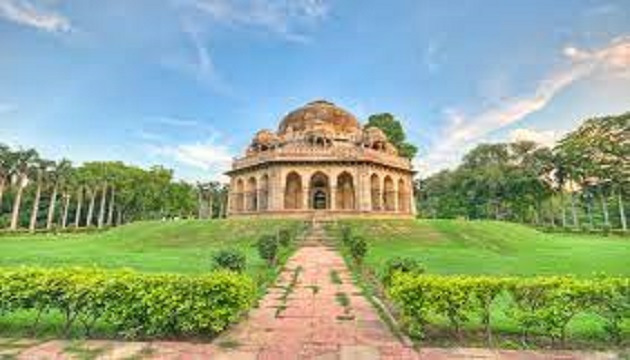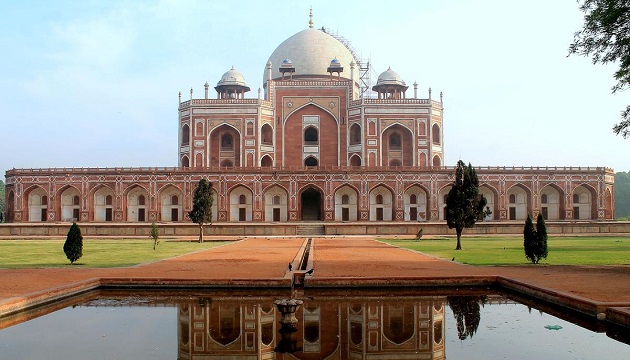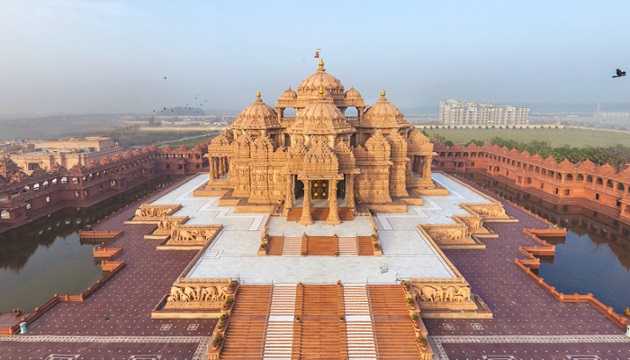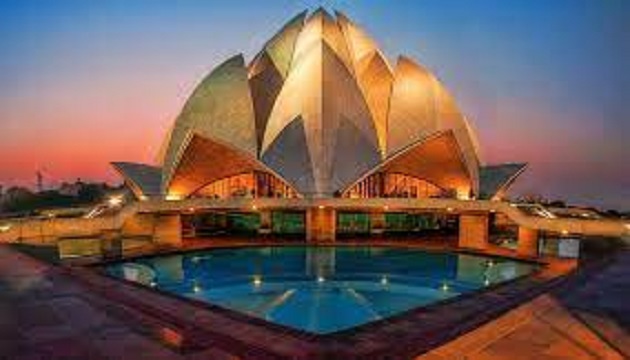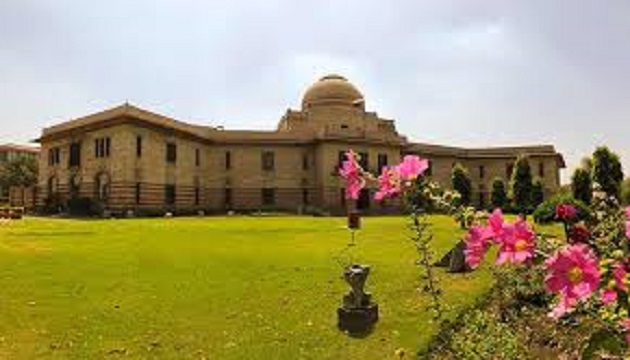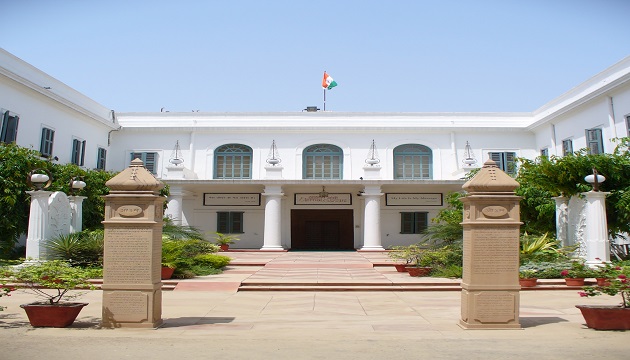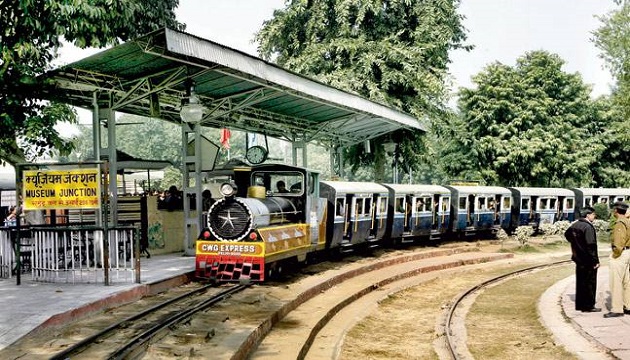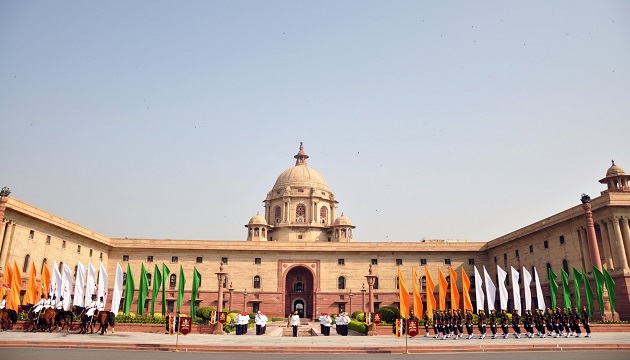Excursions Within Delhi
Excursions Within Delhi
Delhi is a city that bridges two different worlds. Old Delhi is a labyrinth of narrow lanes lined with crumbling havelis and formidable mosques. In contrast, the imperial city of New Delhi created by the British Raj is composed of spacious, tree-lined avenues and imposing government buildings. Delhi has been the seat of power for several rulers and many empires for about a millennium. Many a times the city was built, destroyed and then rebuilt here. Interestingly, a number of Delhi's rulers played a dual role, first as destroyers and then as creators.
Places of Prominent Attractions
Red Fort
Red Fort popularly known as Lal Qila is one of the most important tourist spots in Delhi and is a “UNESCO World Heritage Site”. This magnificent fort on the banks of the river Yamuna is a living piece of history from 17th Century Delhi. This fort was constructed by Mughal Emperor Shahjahan, who also built the wonder of the world Taj Mahal as a symbol of his love. The Red Fort has the highest pedestal as a historical monument in Indian democracy as the site plays a host for the Prime Minister of India as he addresses the nation on August 15 (the Independence Day).
India Gate
The glorious masterpiece at the heart of the city has become Delhi’s identity. India Gate is situated at Rajpath. It memorializes the 90,000 soldiers, who lost their lives fighting for the British Army during the World War I. The foundation stone of India Gate was laid by His Royal Highness, the Duke of Connaught in 1921 and it was designed by Edwin Lutyens. Viceroy Lord Irwin dedicated the monument to the nation 10 years later. Another memorial, Amar Jawan Jyoti, an eternal flame was added after India got its independence to remind the nation of soldiers who laid down their lives in the Indo-Pakistan War of December 1971. There is no fee for visiting India Gate.
Jantar Mantar
Jantar Mantar is a remarkable structure built by Maharajah Jai Singh II of Jaipur between 1727 and 1734. The 5 astronomical observatories, each with a specialized function for astronomical measurement, have captivated the attention of architects, artists, and art historians worldwide. It consists of fourteen geometric devices used for measuring time, forecasting weather changes, predicting behaviour of planets and finding extra-terrestrial altitude. Jantar Mantar is very popular among tourists and the people of Delhi. This structure shows the scientific acumen of ancient India. It is open on all days and the entry fee is Rs. 100 and Rs. 25 for video filming.
Qutub Minar
It is a soaring, 73 meter high tower of victory, built in 1193 by Qutab-ud-din Aibak immediately after the defeat of Delhi's last Hindu kingdom. The tower has five distinct storeys, each marked by a projecting balcony and tapers from a 15 m diameter at the base to just 2.5 m at the top. The first three storeys are made of red sandstone; the fourth and fifth storeys are of marble and sandstone. At the foot of the tower is the Quwwat-ul-Islam Mosque, the first mosque to be built in India. The monument is open on all days.
Humayun Tomb
Humayun's Tomb was built by his widow Hamida Banu Begam, also known as Haji Begam in 1569 after his death in 1556. It is considered as the first distinct example of proper Mughal style inspired by Persian architecture. The influence is evident as it was the first garden tomb built in the Indian Subcontinent. Humayun's Tomb was declared a UNESCO World Heritage Site in 1993. It is open on all days. The entry fee is Rs. 250 and Rs. 25 for video filming.
Lodhi Tomb
The tombs of Muhammad Shah and Sikandar Lodhi are the good examples of octagonal tombs. Shish and Bara Gumbad are square tombs with imposing dome, turrets on corners and facades giving false impression of being double storeyed. There is a sprawling garden around the archaeological structures. It is open on all days and entry is free.
Jama Masjid
This great mosque of Old Delhi is the largest in India, with a courtyard capable of holding 25,000 devotees. It was begun in 1644 and ended up being the final architectural extravagance of Shah Jahan, the Mughal emperor who built the Taj Mahal and the Red Fort. The highly decorative mosque has three great gates, four towers and two 40 m-high minarets constructed of strips of red sandstone and white marble. It is open on all days and entry is free but Tourists not allowed during prayer hours. Photography fee is Rs 200.
Swaminarayan Akshardham
Akshardham in New Delhi epitomizes 10,000 years of Indian culture in all its breathtaking grandeur, beauty, wisdom and bliss. It brilliantly showcases the essence of India’s ancient architecture, traditions and timeless spiritual messages. The Akshardham experience is an enlightening journey through India’s glorious art, values and contributions for the progress, happiness and harmony of mankind. Entry is free but there is fee for exhibition and musical fountain inside the monument. It is closed on Mondays. Photography is strictly prohibited.
Bahai Temple (Lotus Temple)
The temple is built in the shape of a lotus flower and is the last of seven Major Bahai's temples built around the world. Completed in 1986 it is set among the lush green landscaped gardens. The structure is made up of pure white marble. The architect Furiburz Sabha chose the lotus as the symbol common to Hinduism, Buddhism, Jainism and Islam. Adherents of any faith are free to visit the temple and pray or meditate. Around the blooming petals there are nine pools of water, which light up, in natural light. The entry is free and the monument is closed on Monday. Permission is required for photography.
Museums of Interest
National Gallery of Modern Art
Established in the year 1954, this is the best place to explore Indian contemporary art. The royal building of the museum was formerly the residence of erstwhile Maharajas of Jaipur. It houses a splendid collection of paintings, some of which are as old as 150 years! The painting treasure housed here includes the 19th and early-20th century paintings of British artists, Thomas Daniell, and his nephew, William. The museum is open from 10:00 am to 5:00 pm and closed on Mondays.
National Museum of Natural History
An institution devoted to environmental education opened in 1978. Displaying a life size model of dinosaur in front of the museum and have three galleries inside it. The museum introduces the visitors to natural history, ecology and environment with plenty of examples from nature and various aspects of conservation of forest, wildlife, land, water and air. This museum also has a large collection of stuffed animals and birds. The museum is open from 10:00 am to 5:00 pm and closed on Mondays & national holidays.
Gandhi Smriti
The residence of industrialist BD Birla has been converted into a memorial to Mahatma Gandhi, where he used to stay during his visits to Delhi. Gandhiji was assassinated here on his way to offer customary evening prayers. Large collection of photographs with a few personal belongings and a series of small dolls houses and terracotta dolls illustrating Gandhijis' life are the attractions at this museum. The museum is open from 10:00 am to 5:00 pm and closed on Mondays. The delegates interested may also like to visit the Raj Ghat which is the memorial of Mahatma Gandhi.
National Rail Museum
This unique museum has a fascinating and exotic collection of over 100 real size exhibits of Indian Railways. Static and working models, signalling equipments, antique furnitures, historical photographs and related literature etc. are displayed in the museum. The line-up of old coaches includes the handsome Prince of Wales Saloon, built in 1875. Not to be outdone is the Maharaja of Mysore's Saloon built in 1899 with its brocade covered chairs and an elegant rosewood bed; one can peer in through the windows for a good look. The museum is open from 9:30 am to 5:30 pm and closed on Mondays.
Rashtrapati Bhawan
Rashtrapati Bhawan is the official residence of the President of India. This piece of engineering genius was built in the British period. Located in the Raisina Hills, this monument is one of the most popular attractions. It is a magnum opus of symmetry, discipline, outline, colour and harmony. Prior to Indian Independence, this great palace belonged to the Viceroy and was known as the Viceroy House. Rashtrapati Bhavan is one of Edwin Lutyen's designs - one of the largest Royal buildings he designed. The monument is a blend of the best architectural forms- the Mughal architectural designs, Persian art forms, Indian designs and the European architectural styles.
National Gallery of Modern Art
Established in the year 1954, this is the best place to explore Indian contemporary art. The royal building of the museum was formerly the residence of erstwhile Maharajas of Jaipur. It houses a splendid collection of paintings, some of which are as old as 150 years! The painting treasure housed here includes the 19th and early-20th century paintings of British artists, Thomas Daniell, and his nephew, William. The museum is open from 10:00 am to 5:00 pm and closed on Mondays.
National Museum of Natural History
An institution devoted to environmental education opened in 1978. Displaying a life size model of dinosaur in front of the museum and have three galleries inside it. The museum introduces the visitors to natural history, ecology and environment with plenty of examples from nature and various aspects of conservation of forest, wildlife, land, water and air. This museum also has a large collection of stuffed animals and birds. The museum is open from 10:00 am to 5:00 pm and closed on Mondays & national holidays.
Gandhi Smriti
The residence of industrialist BD Birla has been converted into a memorial to Mahatma Gandhi, where he used to stay during his visits to Delhi. Gandhiji was assassinated here on his way to offer customary evening prayers. Large collection of photographs with a few personal belongings and a series of small dolls houses and terracotta dolls illustrating Gandhijis' life are the attractions at this museum. The museum is open from 10:00 am to 5:00 pm and closed on Mondays. The delegates interested may also like to visit the Raj Ghat which is the memorial of Mahatma Gandhi.
National Rail Museum
This unique museum has a fascinating and exotic collection of over 100 real size exhibits of Indian Railways. Static and working models, signalling equipments, antique furnitures, historical photographs and related literature etc. are displayed in the museum. The line-up of old coaches includes the handsome Prince of Wales Saloon, built in 1875. Not to be outdone is the Maharaja of Mysore's Saloon built in 1899 with its brocade covered chairs and an elegant rosewood bed; one can peer in through the windows for a good look. The museum is open from 9:30 am to 5:30 pm and closed on Mondays.
Rashtrapati Bhawan
Rashtrapati Bhawan is the official residence of the President of India. This piece of engineering genius was built in the British period. Located in the Raisina Hills, this monument is one of the most popular attractions. It is a magnum opus of symmetry, discipline, outline, colour and harmony. Prior to Indian Independence, this great palace belonged to the Viceroy and was known as the Viceroy House. Rashtrapati Bhavan is one of Edwin Lutyen's designs - one of the largest Royal buildings he designed. The monument is a blend of the best architectural forms- the Mughal architectural designs, Persian art forms, Indian designs and the European architectural styles.
Shopping in Delhi
Dilli Haat: Craftsmen from different corners of India come over to showcase their products which are reasonably priced. Delhi Haat presents two passions in a platter- food joints and crafts market - both inspired from the village style. The regional food stalls offer the rich traditional delicacies from all regions. Thus, this place offers a kaleidoscopic feel of the richness and diversity of Indian culture and handicrafts. Delegates will be taken to this place on November 22 in the evening after the conference is over.
Khan Market: Classy and posh, Khan Market is a favourite of the expat and diplomatic community. It was originally allocated as seed land to immigrants from the North-West Frontier Province after the partition of India. Today, it is a popular shopping destination in Delhi. It is a large U-shaped market with two parallel ‘U’s and some extensions. You will find excellent book shops, up-market boutiques, opticians, grocers, tailors, brand showrooms, lifestyle stores, etc here & There are also a couple of boutiques selling up-market household furnishings. Across the road are shops that specialize mainly in lighting. You will also find many eating joints: cafes, restaurants, bakeries and street-food corners.
Connaught Place: When it came into being, the sprawling circular market was the largest of its kind in India. The British believed that the horseshoe-shaped market would prove lucky for the shoppers and the shopkeepers both. This market has two circles. The Inner Circle consists of Blocks A to F. The important shops and showrooms here include Adidas Originals, Allen Solly, Bentley, Bon Ton, Cantabil, Gas, Johnson Watch Company, Kalpana, Lee, Louis Philippe, Neelkanth Jewellers, Nike, Orra, Park Avenue, Pepe, Proline and Fila, Roopchand Jewellers, Snowhite Square, Wills Lifestyle. Mohanlal Sons promises to give you ready or tailored attires to suit every occasion. Known for its quality and good service, you will find here a wide range of shirts, trousers, jackets, suits, kurtas and sherwanis. The Outer Circle consists of Blocks G to P. Showrooms like Digjam, Lacoste, Omega, Rado, RL Exports and TAG Heuer lie in this circle.
Chandni Chowk:
Chandni Chowk is the popular place for shopping by tourists. This densely populated market facing Red Fort and has been around for more than three centuries and was once visited by merchants from Turkey, China and even Holland. You may buy curios and souvenirs from here. Dariba Kalan is known for its pearl, gold and silver jewellery and attar (natural perfumes). A visit to Khari Baoli is a must for the spice-lover —spices are what connected India to the West. Kinari Bazaar is the best place to look for zari and zardozi trimmings and tinsel. The cloth bazaar of Katra Neel offers all kinds of fabrics such as silks, satin, crepe, cotton and muslin. Moti Bazaar is famous for shawls and pearls. Chandni Chowk may also be explored for Indian Cuisines.
For more details logon to https://www.delhitourism.gov.in/delhitourism/index.jsp
Mode of Transportation
A. HOHO Bus Service: The Hop-On/Hop-Off Bus service provides sightseeing options to tourists who are willing to explore Delhi with a more flexible schedule. These tours are conducted in specially designed buses which move continuously along a route, allowing tourists to board or alight at any of the pick-up/drop off points. The route of these buses covers monuments, museums, galleries, gardens, shopping malls, hotels and bazaars. All in all, the service is designed to provide a complete experience of the city to a tourist. The following are the salient features of the Hop On/Hop Off bus service-
1. Air-conditioned environment friendly luxury buses
2. Frequency- every 30 minutes
3. Flexibility - tourists can hop on and hop off at any pick up/drop off point
4. Entertaining and knowledgeable tour guides
5. Route covers all major tourist destinations in Delhi
6. Audio guides
7. Online booking Facility
8. Onboard ticketing facility
9. Covers more than 18 tourist locations
10. Monument entry tickets are available to save time
For more details logon to http://www.hohodelhi.com
B. Delhi Metro: Delhi Metro, known for its world class standards, has its connectivity to almost all the places of historical significance and other important destinations of touristic importance. Following are the list of Metro Stations and their connectivities to the places of touristic importance:
